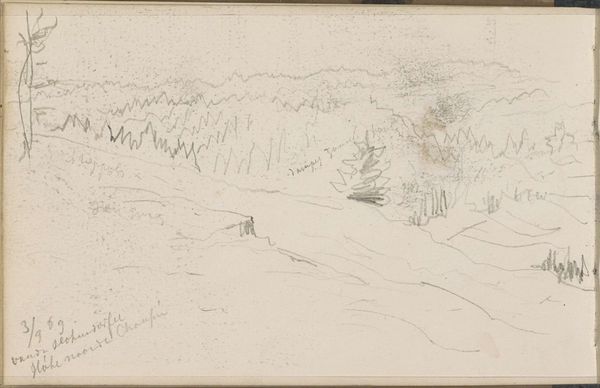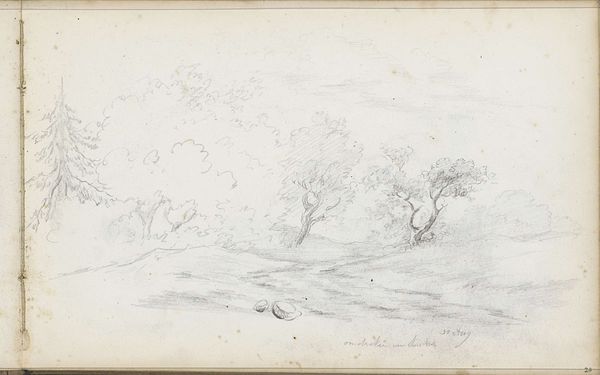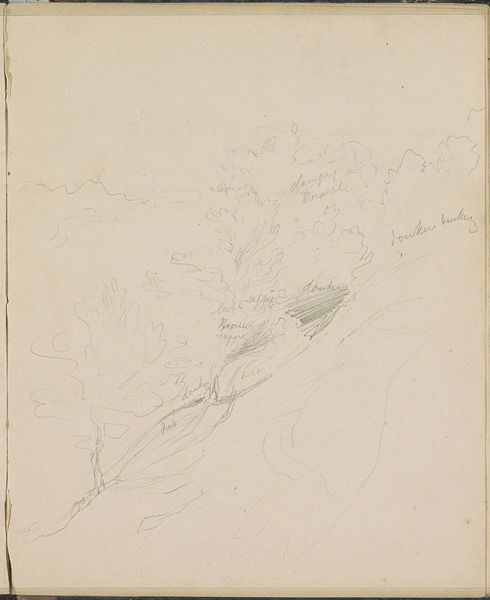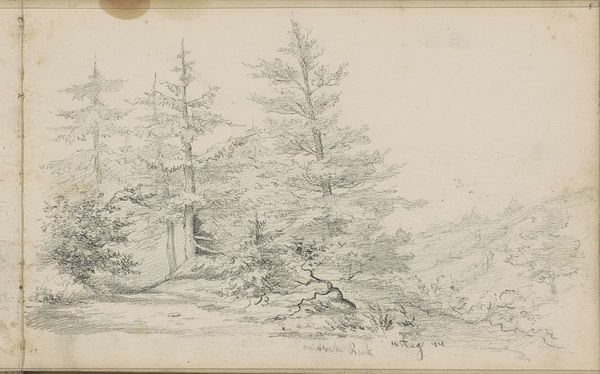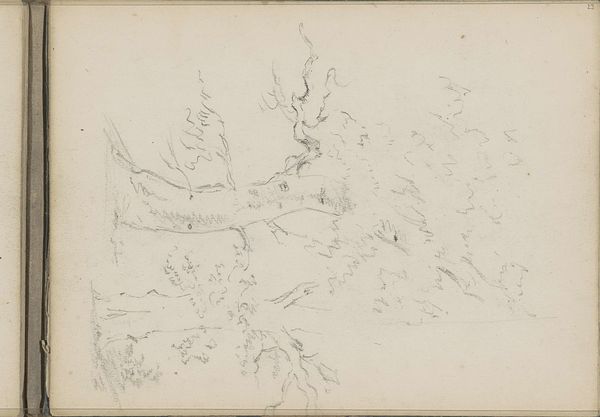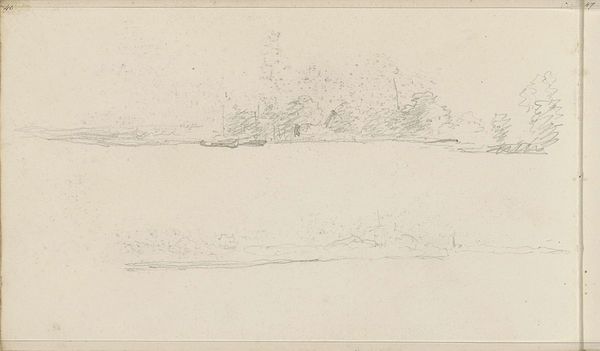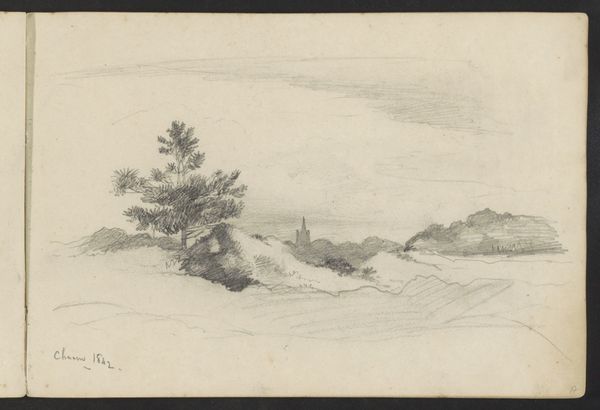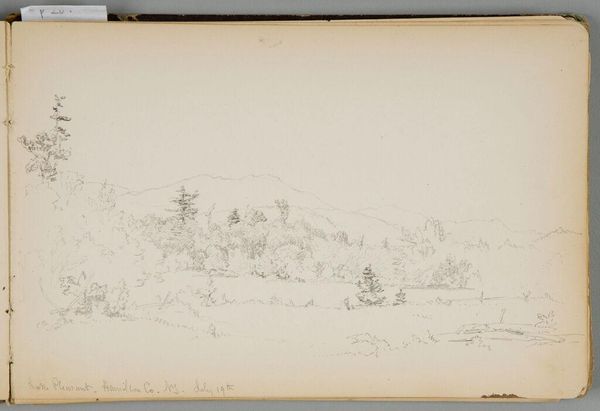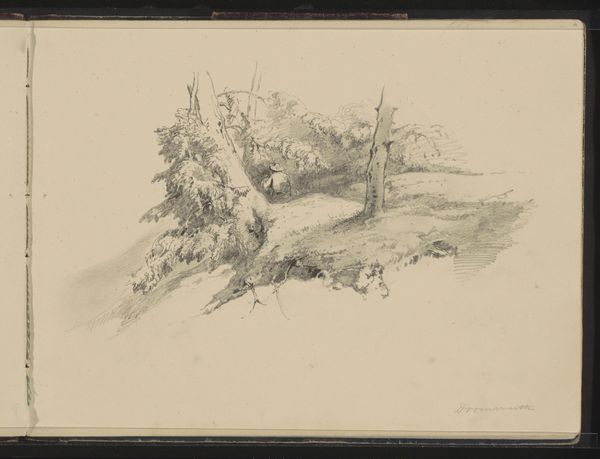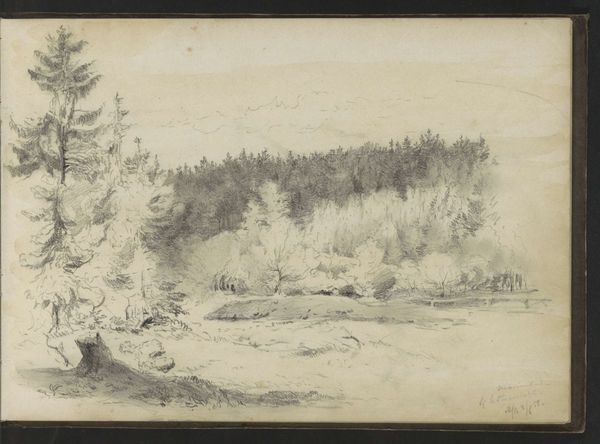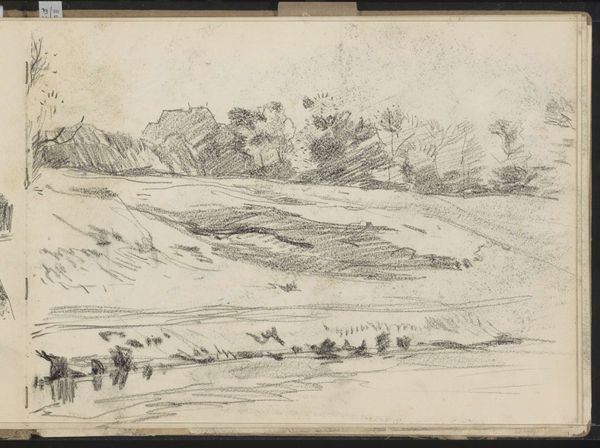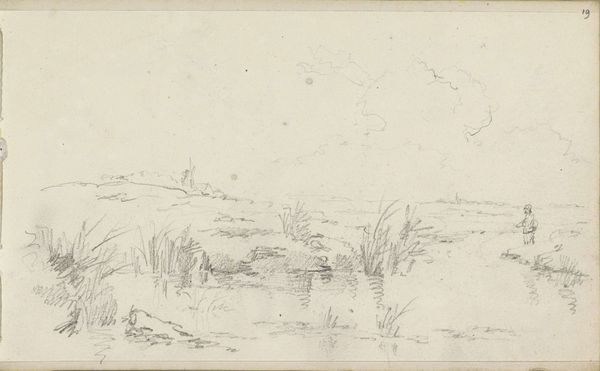
drawing, pencil
#
drawing
#
light pencil work
#
pen sketch
#
incomplete sketchy
#
landscape
#
personal sketchbook
#
sketchwork
#
ink drawing experimentation
#
pen-ink sketch
#
pencil
#
pen work
#
sketchbook drawing
#
sketchbook art
#
realism
Copyright: Rijks Museum: Open Domain
Editor: This is "Landscape near Ferdinand's sources" by Johannes Tavenraat, created in 1869 using pencil and ink. It’s a rather light and airy sketch. What strikes me is how minimal the marks are to create a sense of depth. How do you see this work in terms of its production? Curator: This drawing presents a compelling glimpse into artistic labor of the time. Consider the readily available and relatively inexpensive materials—pencil and paper. This accessibility suggests an emerging democratisation of art production, shifting it away from exclusive, commissioned works. Tavenraat's quick sketch captures a specific locale but, even more importantly, represents a process of seeing and recording. How does this immediacy impact your interpretation of the work? Editor: It makes me think about the act of observing and quickly capturing a fleeting moment. It feels less about a polished final product and more about the artist's immediate interaction with the environment. It looks more of a notebook than fine art, so do you think its value lies more in this demonstration of this process, rather than aesthetics? Curator: Precisely! And consider the "landscape" genre itself. Traditionally, landscape painting served to glorify land ownership or evoke romantic ideals. However, in Tavenraat's sketch, we see something different. It suggests how artistic expression might reflect changing societal values related to nature and individual experience. This method democratizes landscape art itself. How does Tavenraat use sketching versus complete rendering? Editor: That’s interesting. Because the sketch emphasizes the process, you can feel him exploring forms and light, not just reproducing what he sees. This was illuminating - it helped to focus on the production aspect itself, and how it represents democratization, instead of aesthetics, that matters. Curator: Exactly. By focusing on material and process, we unveil deeper meaning. It certainly prompts us to question art's traditional role within society, what art materials enable, and their impact on the artwork.
Comments
No comments
Be the first to comment and join the conversation on the ultimate creative platform.
